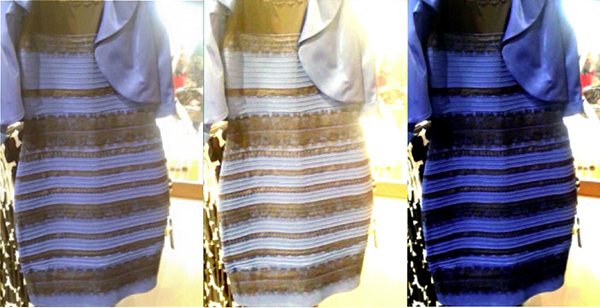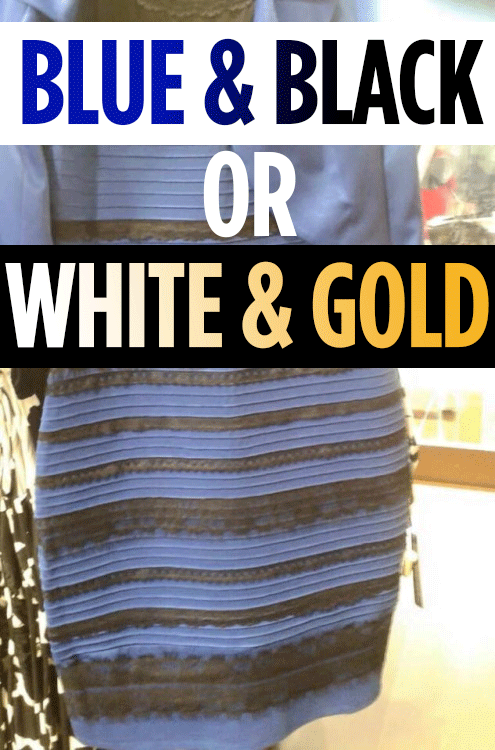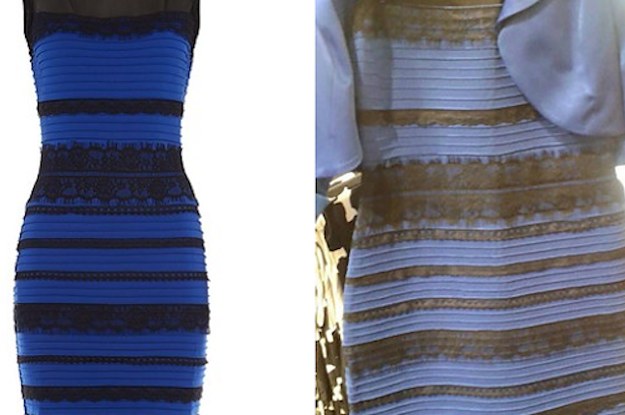Table of Content
That the differences in color perception are probably related to how our brains are interpreting the "quantity of light that comes into our retina." Those who originally saw The Dress as blue and black should not be too smug, though. Some may argue that colour itself is just a construct imposed by the brain to make sense of the world. What enters the eye is just a spectrum of wavelengths of light, we turn that into something with category boundaries and labels and connotations. But one thing’s for certain; The Dress is a brilliant example of how breaking the perceptual system helps us to learn more about how our brains work. Our photoreceptor cells are of two specific types – rods and cones.
Remember, the dress is actually blue and black, though most people saw it as white and gold, at least at first. Mentally subtracting short-wavelength light (which would appear blue-ish) from an image will make it look yellow-ish. The human brain assumes that natural or artificial light is reflected by the item in the photograph and compensates for that perception by assuming the surroundings are also natural or artificial. When compared to people under the age of 65, those over the age of 65 were more likely to see the dress as gold and white, while those under the age of 65 were more likely to see it as black and white. This could be due to the fact that older people spend more time indoors. For a week, the debate became well known in Colonsay, a small island community.
Camel Spot Ruffle Neck Midi Dress
Most purchases shipped from our warehouses will arrive within 5-7 business days. Some items sent directly from our suppliers may take longer, and items ordered together may not arrive in the same box. The left brain is more verbal, analytical, and orderly than the right brain. It's better at things like reading, writing, and computations.

But what causes it to reflect that wavelength is not its “being a certain color.” It’s ultimately because its molecular structure interacts with light in a certain way—a way such that some frequencies are absorbed and others are reflected. Well, ultimately, it's because the neurons in our brains fire a certain kind of way. The fact that some people see it differently shouldn't be any more surprising than the fact that some people are colorblind or the fact that our senses can be fooled by optical illusions. No matter where you're headed, dressbarn offers a wide selection of women's dresses perfect for day, evening, and special events. Our women's dresses online come in various styles, sizes, colors, and materials to maximize comfort and elevate your wardrobe. But even when it's the same photograph, some people see blue, and others see white.
Romantic partners who get phubbed are more likely to spy on digital communications, study finds
When looking at a photo of it, some people see it as gold and white, while others see it as blue and black. So, individual variations in color perception may not purely be a matter of the nature and number of the cones in the retina. It can also be a result of the fact that people with different numbers of cones calibrate the input from the retina in different ways. That's what Twitter user Arthur asked his followers, and people are literally arguing over the answer. The brand confirmed that the sandals are blue and dark blue, but that hasn't stopped the internet from debating.

Cats and other animals with nocturnal tendencies are blessed with a higher rod receptor concentration in their retinas, which is why, while their night vision might be better than us humans, they are mostly colorblind. When we view an object, the light source reflects off of it and the light waves that reach our eye are processed by photoreceptors in the retina. These photoreceptors send information to our brain, which then constructs our perception of the object. A neuroimaging study has also identified the differences in brain regions that are activated between those people who judge the dress as gold-white or blue-black.
Shop with confidence
Cone excitations were used to compute cone contrasts and additional metrics to determine the relative contributions of L, M and S cones as well as opponent mechanisms. Fig 2 shows the colorimetric set-up to quantify luminance and chromaticity. Another mindblowing creation by Kitoaka shows a girl with two different coloured eyes - which are actually both grey. Since The Dress conundrum, a wave of optical illusions have taken the internet by storm. Want to wait for the best possible deals on designer clothes, shoes and accessories?
Any difference in perception related to the dress occurred because of how our brains deal with the information of the quantity of light entering our retina. We have three kinds of cones that are individually tuned to register red, blue and green wavelengths of light. Once the light is registered by our eyes, our light receptors convert these colors into electric signals, which are sent across to our brains. Our brain is responsible for the colors that we eventually see, as it takes all of these signals received by the different receptors and blends them together to form the final image we perceive. Thus far, research suggests that the difference arises because you use your brain differently.
WORDS OF INTEREST
We see the objects around us because light bounces off them and back onto our retinas. The brain has learnt to register what colour the actual light source is and then subtract that colour from the actual colour of the object. We know that the actual dress - from British retailer Roman Originals - is royal blue and black. But the it’s the low quality photo - taken by this Tumblr blogger - of the dress that has flummoxed us all, and triggered a flurry of hilarious memes. "People either discount the blue side, in which case they end up seeing white and gold, or discount the gold side, in which case they end up with blue and black," she added.

Jenna Bromberg, senior digital brand manager for Pizza Hut, saw the dress as white and gold and quickly sent out a tweet with a picture of pizza noting that it, too, was the same colours. Do called it "literally a tweet heard around the world". So, the culprit behind our differential perceptions of the color of the dress was the blue light. In our attempt to do away with the chromatic bias of the daylight axis, we either tried to eliminate the blue in our color perception and saw the dress as gold-white or did the same for the gold and perceived the dress to be blue-black. For example, fluorescent lights give off a higher percentage of yellow light than what is found in the color spectrum of daylight. However, we don’t see everybody and all things as yellow-tinged when we are indoors under fluorescent lighting conditions.
No comments:
Post a Comment